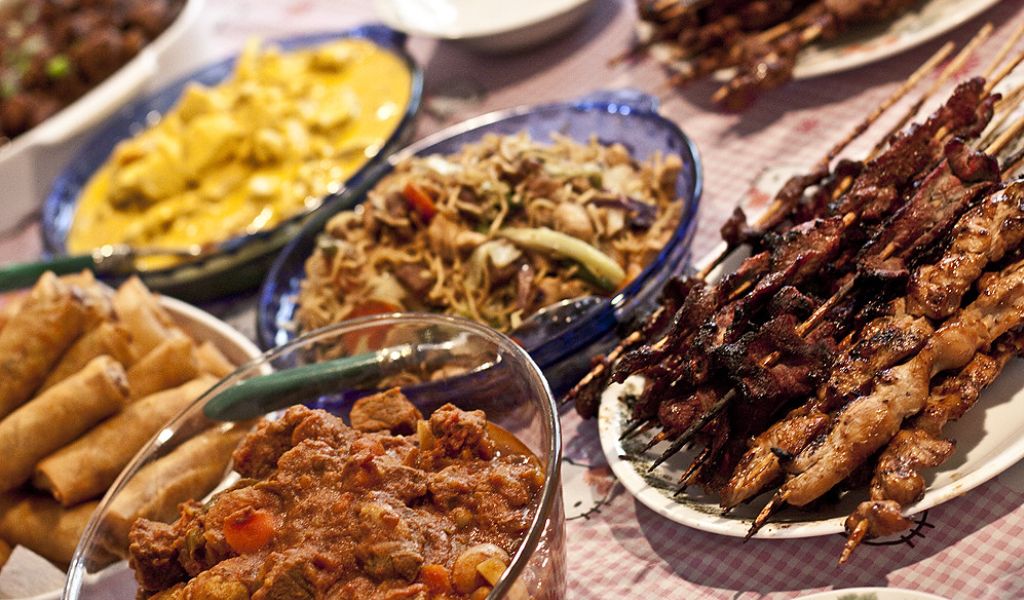Exotic Foods In the Philippines – Buckle Up Your Taste Buds
Welcome to the Philippines, an archipelago that’s not just a mosaic of beautiful islands but also a melting pot of flavors that can astound, surprise, and delight even the most adventurous foodies. This land offers a culinary journey that is as diverse as its landscapes, with every region boasting delicacies that can tantalize or challenge your palate. So, get ready to savor the extraordinary as we embark on a customizable and unforgettable tour of the top exotic foods that the Philippines has to offer.
Whether you’re a thrill-seeking traveler or a curious epicurean, these exotic offerings are more than just meals; they’re edible gateways to understanding the rich culture and history of the Filipino people. From the ocean’s depths to the mountaintops, these distinctive dishes embody the vibrant spirit of the Philippines. Let’s dig into the taste of the exotic—Filipino style!
Balut – Duck Egg Delicacy

Unassuming at first glance, the humble balut is the Philippines’ rite of passage for any food adventurer. Crack open the shell, and you’re greeted by a sight that’s both bizarre and fascinating. Emboldened by the warm, savory broth that wafts to your nostrils, you nip at the edges of comfort food and exotic fare. But it’s not just the unusual appearance that captivates—it’s the blend of textures, from the creamy yolk to the delicate bites of an embryo, all coming together in a rich, flavorful broth that truly defines Filipino street food culture.
Isaw – Grilled Chicken Intestines

Amidst the sizzle and smoke of open-air markets, the isaw beckons the brave. These slender coils, usually ignored or discarded, are transformed upon the fiery grill. As they char, their modest origins are forgotten, giving way to a crunch and chew that’s unexpectedly hearty. Dunk them into that zesty vinegar dip, and it’s a playful tango of flavors. Every nibble tells the tale of streets humming with life, where such simple offcuts rise to the spotlight.
Tamilok – Woodworm Delight

Step away from the comfort of familiar seafood and into the realm of the tamilok—it’s an experience reminiscent of an oyster’s kiss but with the thrill of the unknown. Harvested from the rotting cores of fallen mangroves, these elongated mollusks don’t win beauty contests, but they triumph in the flavor department. Scooped fresh and slurped down, they bring the essence of the ocean to your palate, a mix of the salty, earthy, and downright avant-garde that begs to be tried at least once.
Kinilaw – The Filipino Ceviche

Kinilaw is poetry on a plate—vinegar-laced verses and stanzas of citrus infusing fresh catch with life anew. There’s a dance here, a balance of taste where fish and acidity whirl in a silent waltz. The real magic lies in the transformation, a culinary alchemy without the need for flame. Its simplicity is deceptive, masking a depth of flavor as vibrant as the Philippine seas from whence its ingredients came.
Adidas – Chicken Feet Street Fare

Some find it peculiar to name a treat after a sportswear brand, but in the Philippines, ‘Adidas’ has a taste of its own. Chicken feet, embraced in the street food scene, speak of resourcefulness and spirited zest. At first daunting with their peculiar form, upon tasting, they reveal a charm all their own—a playful texture, an absorbing marinade, an unhurried nibble. Each foot, whether stewed or barbequed, becomes the canvas for flavor artists selling roadside art.
Dinuguan – Savory Stew of Pork Blood

Dinuguan invites you into the shadows, where cooking is an ancient spell, binding pork, blood, and vinegar into a bewitching stew. This dish commands respect, not for its somber hues alone but for its profound savor that blankets your tongue. Paired with fluffy puto or steaming rice, every spoonful is an affirmation of life and energy—a bold encounter with the deepest culinary traditions of the land.
Betute – Stuffed Frog Specialty

In the countryside, especially in the Pampanga province, the chorus of frogs signals a feast. Betute is a casket of flavor, plump amphibians yielding to ingenuity. They are morbidly stuffed—by turns whimsical and unnerving—but undeniably a symphony in the mouth. The crunchy exterior parts to a tender stuffing, telling the tale of harvests and rains, of fields teeming with life repurposed into a plate of cultural pride.
Soup No.5 – Aphrodisiac Soup

Daring and cloaked in mystery, Soup No.5—with its exotic blend of bull’s genitals—tempts those in search of culinary bravery and maybe a bit of romance. Its boldness isn’t limited to its reputed properties of virility; its flavor, too, is robust and heady. Sip by sip, the clear, hearty broth infused with traditional herbs and spices delivers warmth that trickles through the body, a comforting enigma in every bowl.
Pinikpikan – Cordilleran Chicken Dish

Born of the Cordilleras, amidst misty mountains and age-old rituals, Pinikpikan is a summoning of essence. The fates of the chicken are not tender, yet the outcome is a rustic soup with layers that linger in the memory. It’s the story of a community—unspoken rules, sacred practices, respect for the sustenance offered by nature—all in a single serving.
Durian – The King of Fruits

Revered and reviled, the durian stands as a testament to the contrasting beauty of the Philippines. Its spiky armor and notorious scent mask a custard-like heart, a flavor juxtaposing notes of sweet and savory, delicate and overpowering. To partake in durian is to embrace the full spectrum of nature’s whims—a touch of daring, a wealth of reward, in the shadow of this majestic fruit.
Feasting on the Wild Side – A Culinary Quest in the Philippines
Exotic food tasting in the Philippines is more than just a segment of your travel itinerary; it’s an adventure that stays with you long after the journey is over. Every bite tells a story, and every flavor paints a picture of the archipelago’s diverse cultural tapestry. Whether these dishes have made you curious or struck up a sense of culinary bravado, one thing is certain: The Philippines offers a smorgasbord of exotic tastes that are as captivating as the country’s stunning vistas.
So why not embrace the unconventional? By exploring these exotic foods, you uncover pieces of Filipino heritage, connect with local traditions, and, of course, accumulate unforgettable stories to take home. Just remember, the best way to experience any country’s culture is to eat like a local, and in the Philippines, that means savoring the exotic with an open mind and an eager palate. Mabuhay and happy eating!
FAQs About Exotic Foods in the Philippines
1. Where can one find exotic foods in the Philippines?
Exotic foods in the Philippines can typically be found in local wet markets, specialty restaurants, food festivals, and sometimes as street food in various regions.
2. Are exotic foods safe to eat in the Philippines?
While many exotic foods are considered safe and are part of traditional cuisine, it’s essential to ensure they are prepared hygienically. Eating at reputable places or trying foods prepared by experienced cooks can minimize any health risks.
3. How are exotic foods typically prepared?
The preparation of exotic foods varies widely. They might be grilled, boiled, fried, or eaten raw. Each dish has its traditional method of preparation that contributes to its unique flavor and texture.
4. Are there any ethical concerns regarding the consumption of exotic foods in the Philippines?
Ethical considerations may arise regarding animal welfare, species conservation, and environmental impact. It’s important to consider these factors and choose to consume foods that are sourced sustainably and responsibly.
5. Do Filipino exotic foods have any health benefits?
Certain exotic foods are believed to have health benefits, such as increased stamina or nutritional value. However, any specific health claims should be taken with skepticism unless supported by scientific evidence. Always eat a balanced diet and treat exotic foods as occasional novelties rather than dietary staples.







